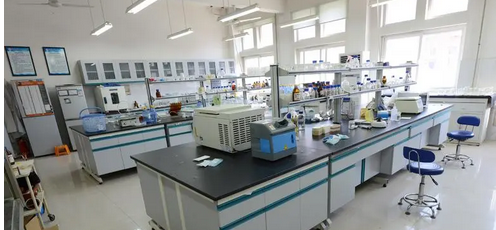2.3 Metal-based Flame Retardants
Numerous metal oxides possess varying degrees of flame retardant activity, characterized by good thermal stability, prolonged flame retardant effects, environmental friendliness, and low toxicity.
Incorporating metal oxide nanoparticles into polymer composites, leads to a significant increase in Limiting Oxygen Index (LOI), and notable smoke suppression properties. Their flame retardant mechanisms involve dehydration endothermy, insulation and dilution effects of water vapor, as well as catalyzing dehydration of some polymers to facilitate char formation. However, when used alone, they require high addition levels (>30%), significantly affecting the mechanical properties of the matrix material.
Currently, they are primarily used in combination with other flame retardants. For instance, in-situ encapsulation surface modification of magnesium hydroxide (MH) with melamine cyanurate MCA, an organic nitrogen flame retardant, results in encapsulated MH-MCA that enhances the flame retardancy, and mechanical properties of PA66. MH-MCA exhibits better compatibility and dispersion in the PA66 matrix.
Holdsworth et al. studied the combined use of tungstates, with phosphorus-containing flame retardants, discovering that zinc tungstate, in the presence of aluminum diethylphosphinate (AlPi) and melamine polyphosphate (MPP), achieves a maximum LOI of 28% and a V-0 rating, with a Peak Heat Release Rate (PHRR) 80% lower than pure PA66.
Zhan et al. used micrometer-sized magnesium oxide (MgO) as a synergist with aluminum diethylphosphinate to synergistically enhance the flame retardancy of PA66. With a total loading of just 10%, the AlPi/MgO system improved the flame retardancy of PA66, achieving an LOI of 32.3% and a UL94 V-0 rating in vertical burn tests.

2.4 Nano Flame Retardant Synergists
Polymers have relatively low thermal conductivity, typically ranging from 0.2 to 0.4 W/(m·K), resulting in inefficient heat dissipation upon heating, which can lead to localized heat accumulation and spontaneous ignition. Although nanofillers themselves do not possess outstanding flame retardancy, adding a small amount to polymers often significantly enhances thermal conductivity, improves thermal stability, and reduces smoke release, peak heat release rate, and flame spread velocity.
Nano flame retardant synergists like montmorillonite typically, require synergistic modification with phosphorus nitrogen flame retardants to enhance practicality. Toprakci et al. added halloysite nanotubes (HNT) to PA66 spinning solutions, filling electrostatic spinning composite fibers, which increased solution viscosity and imparted good thermal stability to the composite nanofibers.
Liu et al. used aluminum diethylphosphinate (ADP) and HNT as a flame retardant system to flame-retard modify PA66 via melt blending. Under optimized conditions, the ADP-HNT/PA66 composite achieved a UL94 V-0 rating and an LOI of 35.6%. The introduction of HNT synergistically interacts with ADP in the condensed phase, promoting crosslinking and charring.

Leave A Comment
You must be logged in to post a comment.